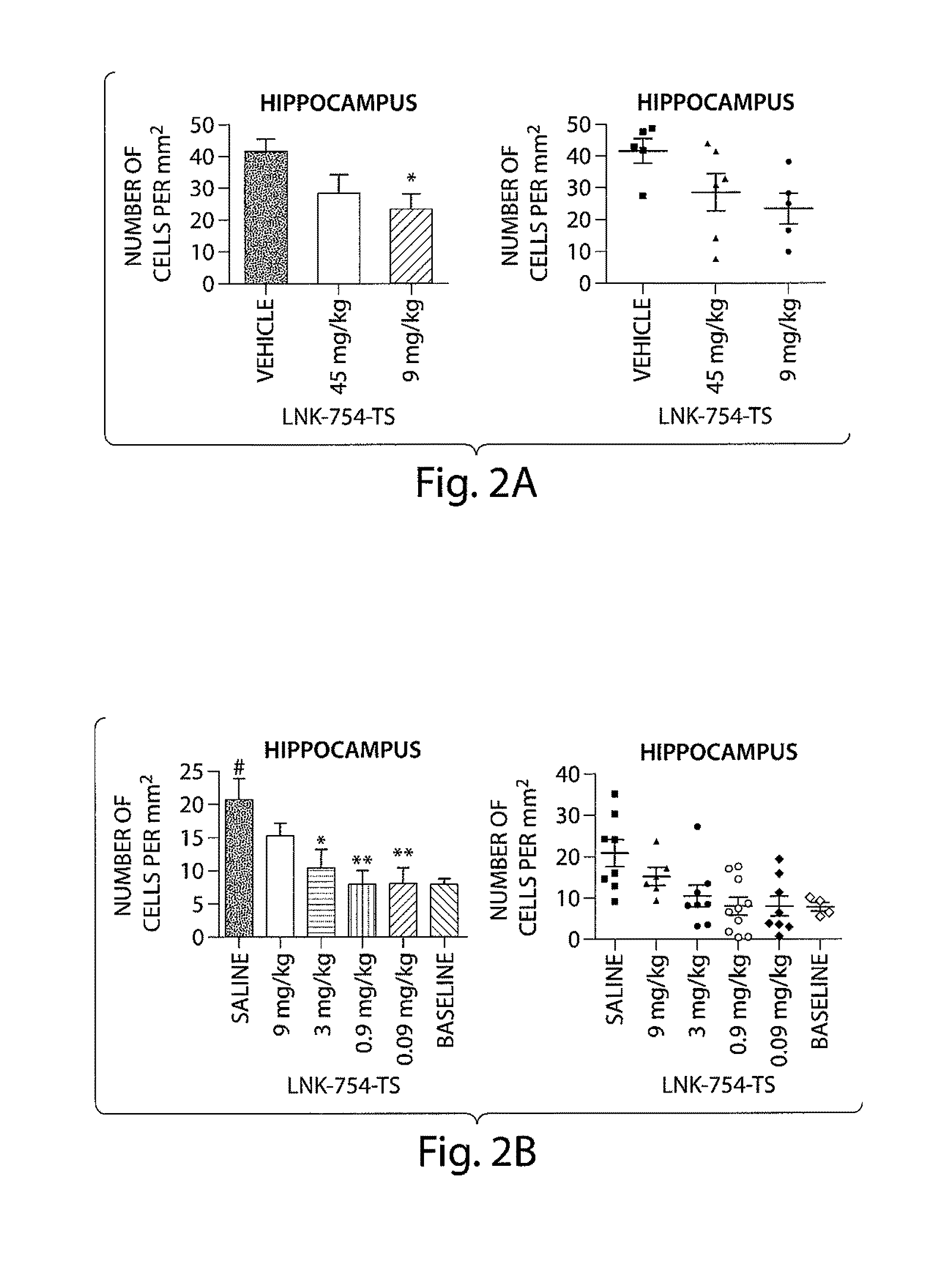Treatment of proteinopathies using a farnesyl transferase inhibitor
a technology of farnesyl transferase and proteinopathies, which is applied in the direction of drug compositions, immunological disorders, metabolism disorders, etc., can solve the problems of life-threatening breathing difficulties, heart failure, and difficulty in raising the arms above the shoulders, so as to reduce the levels of -synuclein in the hippocampus, reduce the number of -synuclein-positive neurons, and reduce the number of -synuclein-positiv
- Summary
- Abstract
- Description
- Claims
- Application Information
AI Technical Summary
Benefits of technology
Problems solved by technology
Method used
Image
Examples
example 1
Preparation of LNK-754-TS
[0241]The synthesis of LNK-754-TS (D-tartrate salt) is shown below in Schemes 1 and 2. The synthesis starts with the preparation of the ketone material 8. The synthesis of this material is shown in Scheme 1.
[0242]The GMP stage of the synthesis is shown in Scheme 2 and begins with a Sonogashira palladium-catalyzed coupling reaction [Step (h)]. In this reaction the trimethylsilyl acetylene group is coupled to the bromo-ketone (8).
[0243]The resulting product (10) then undergoes a Grignard reaction [Scheme 2, Step (j)] with 5-bromo-1-methyl-1H-imidazole, giving 11 as a racemate. Purification of the racemate as its L-tartrate salt [Scheme 2, Step (k)] then gives chirally pure trimethylsilyl acetylene (11A). This compound is finally deprotected with sodium hydroxide and crystallized as its D-tartaric acid salt to produce LNK-754-TS [Scheme 2, Step (1)].
[0244]A narrative description of the manufacturing process, referring to Scheme 2, is provided below.
[0245]Step 1...
example 2
Preparation of Zarnestra®
[0266]Zarnestra® can be prepared according to the procedure described in WO 97 / 21701.
example a.1
[0267]1a) N-Phenyl-3-(3-chlorophenyl)-2-propenamide (58.6 g) and polyphosphoric acid (580 g) were stirred at 100° C. overnight. The product was used without further purification, yielding quant. (±)-4-(3-chlorophenyl)-3,4-dihydro-2(1H)-quinolinone (interm. 1-a).
[0268]1b) Intermediate (1-a) (58.6 g), 4-chlorobenzoic acid (71.2 g) and polyphosphoric acid (580 g) were stirred at 140° C. for 48 hours. The mixture was poured into ice water and filtered off. The precipitate was washed with water, then with a diluted NH4OH solution and taken up in DCM. The organic layer was dried (MgSO4), filtered off and evaporated. The residue was purified by column chromatography over silica gel (eluent:CH2Cl2 / CH3OH / NH4OH 99 / 1 / 0.1). The pure fractions were collected and evaporated, and recrystallized from CH2Cl2 / CH3OH / DIPE, yielding 2.2 g of (±)-6-(4-chlorobenzoyl)-4-(3-chlorophenyl)-3,4-dihydro-2(1H)-quinolinone (interm. 1-b, mp. 194.8° C.).
[0269]1c) Bromine (3.4 ml) in bromobenzene (80 ml) was added d...
PUM
| Property | Measurement | Unit |
|---|---|---|
| body weight | aaaaa | aaaaa |
| body weight | aaaaa | aaaaa |
| slice thickness | aaaaa | aaaaa |
Abstract
Description
Claims
Application Information
 Login to View More
Login to View More - R&D
- Intellectual Property
- Life Sciences
- Materials
- Tech Scout
- Unparalleled Data Quality
- Higher Quality Content
- 60% Fewer Hallucinations
Browse by: Latest US Patents, China's latest patents, Technical Efficacy Thesaurus, Application Domain, Technology Topic, Popular Technical Reports.
© 2025 PatSnap. All rights reserved.Legal|Privacy policy|Modern Slavery Act Transparency Statement|Sitemap|About US| Contact US: help@patsnap.com



